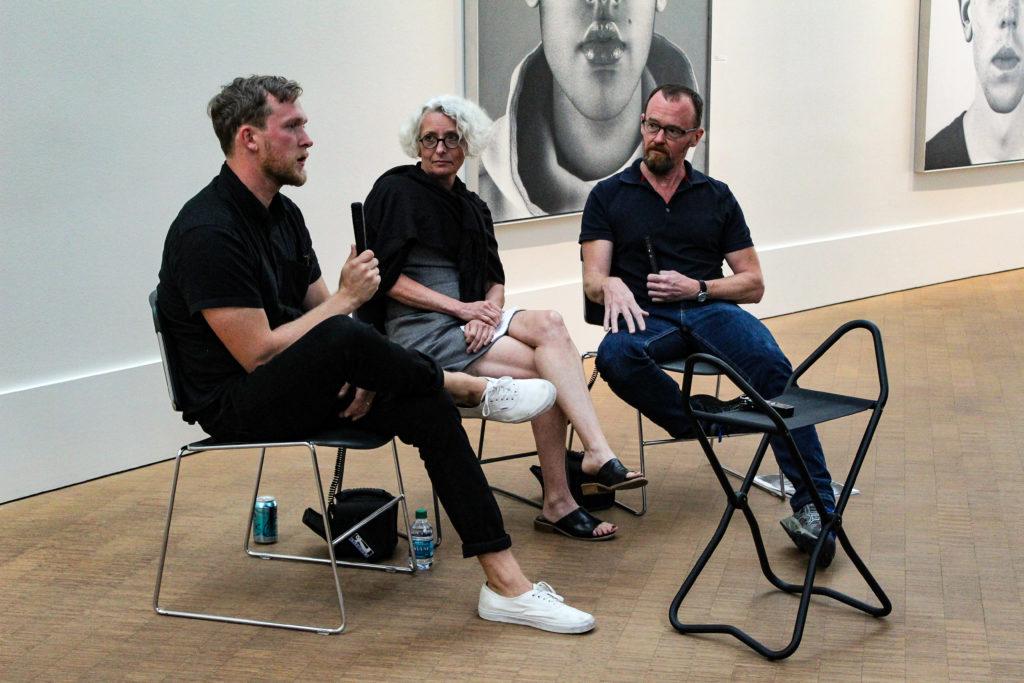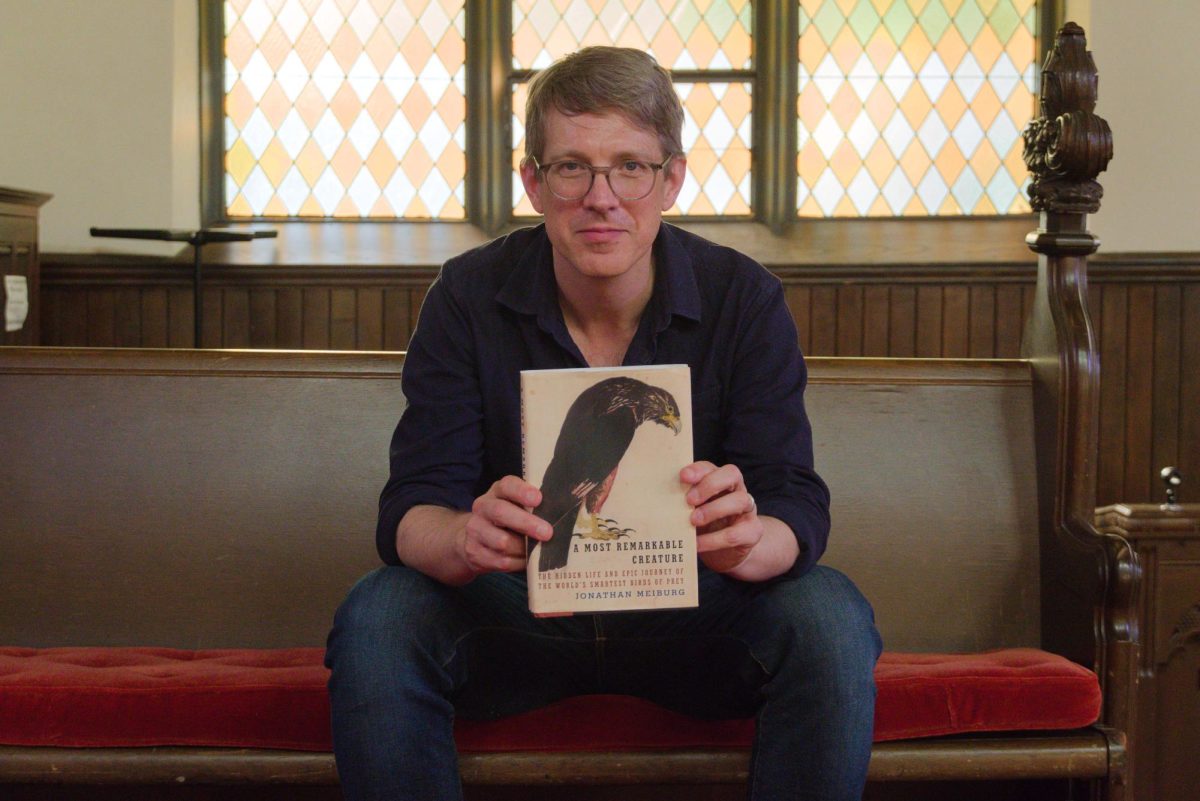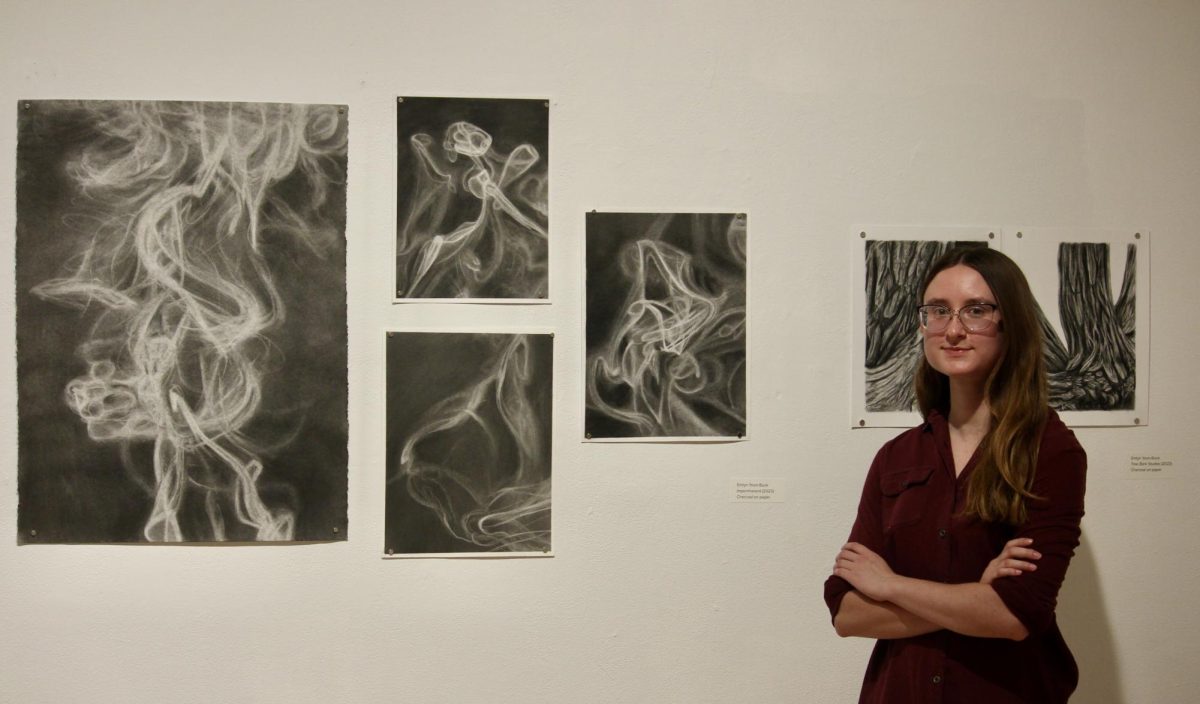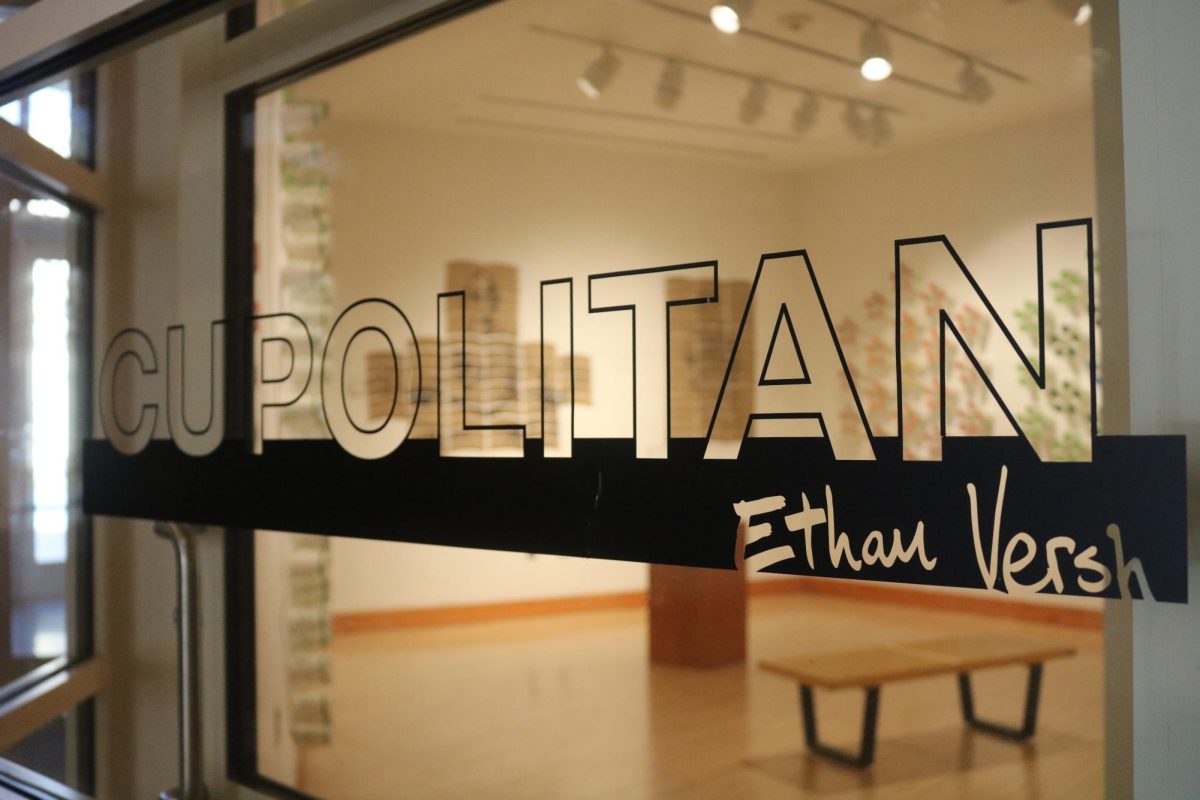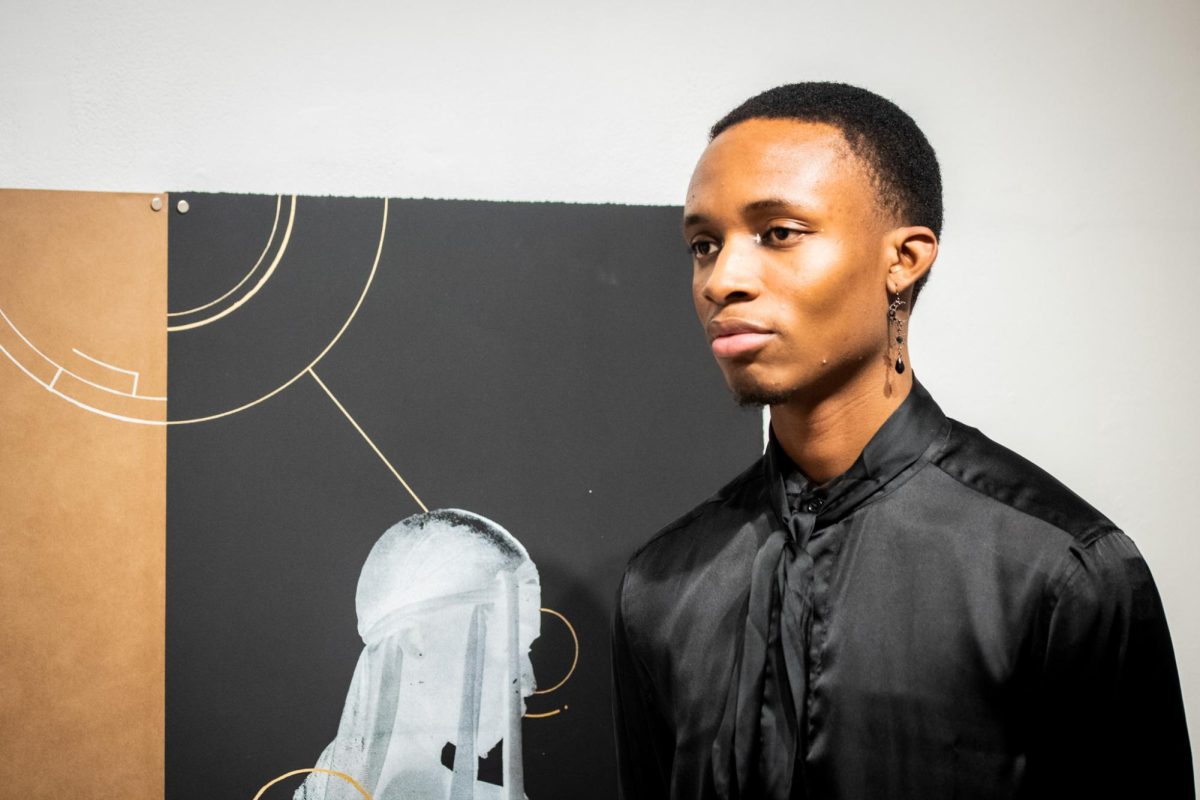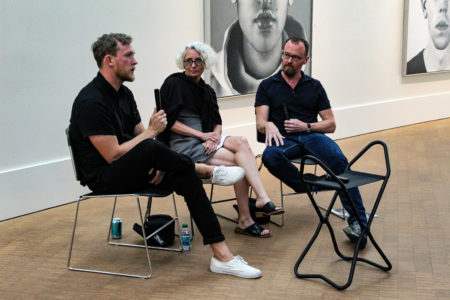
By Zainab Thompson
thompson8@grinnell.edu
Anyone who wants to experience “Faced: Charles Bierk” in Faulconer Gallery needs to do so fast. Saturday Sept. 15 is the last day for the exhibit. Come face to face with the huge, black and white hyper-realistic portraits that make up most of the display and see the intricate gridding process that he used to create his work.
“It’s kind of like an Easter egg that these are in fact paintings,” Bierk said. From a distance, the viewer is no doubt convinced that the work is a blown-up photograph. It’s only when the viewer is within a few feet of the painting that they may notice the little details like the thin paint strokes highlighting lips, a cat hair trapped in the paint, the faint pencil marks under the layers of white paint.
Bierk said that when he has a subject come into his studio, he may take anywhere between 50 and 200 photographs, each with varying lighting setups, background colors and poses. He then begins the process of narrowing the pictures down to what he wants. Later, he may decide to mess around with the photo’s contrast as well. Then, he starts gridding.
“Gridding” is a process artists typically use to reproduce their work onto a larger material. Bierk then treats each square or “box” like an individual painting, methodically working through each one until the entire portrait is complete. “Other than the hands, I would say on any of these portraits, at no point am I working on a square that you can clearly cut out and say ‘oh, that’s a nose or an ear or an eye,’” Bierk said.
“Someone once said [the portraits are] more real than real, whatever that means,” Bierk joked. When asked how the canvas isn’t full of squares, he added that he “can still see squares on some of these.” One portrait did have slightly visible squares, seen in the white of the portrait subject’s shirt. Bierk said that he didn’t mind leaving marks “because these are paintings. I’m not trying to trick people into thinking they’re photographs … I think it’s interesting that people think they’re perfect at first.”
Bierk was born in Peterborough, Ontario. On becoming a painter, Bierk cites the influence of his father, who was a “fairly well-known” American-Canadian painter that taught at Fleming College in Ontario.
“His studio was a machine,” Bierk said when he described how he and his brother would go and hang out at their father’s studio after school when they were children. He said that the most important lesson he learned from his father was to “treat this thing like a job, work harder than anyone else, and hopefully you will see results.”
Most of the works in the exhibit were people close to Bierk: his brother, his future wife and friends from the time. “I will say I strive to give each of my subjects as much humanity as possible … to make monuments out of the people that I love.”
To anyone who does not get the chance to see the exhibition, Grinnell has acquired the main piece, “Tau.” At 7 1/2 feet tall by 6 1/2 feet wide, it is now a part of the College’s permanent collection. The piece is Bierk’s first work to be part of a museum collection.


















































